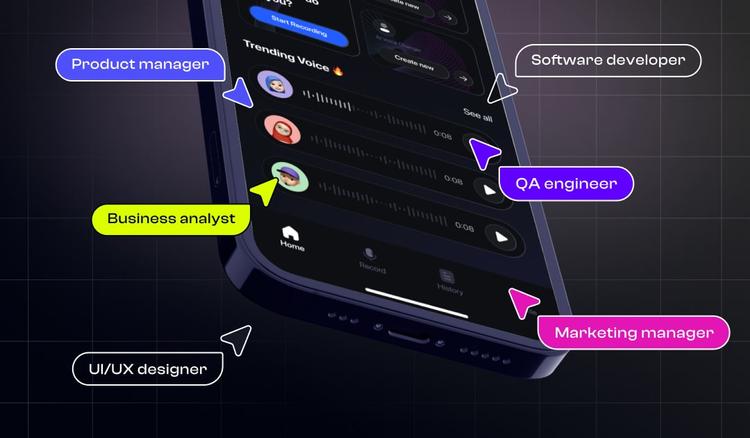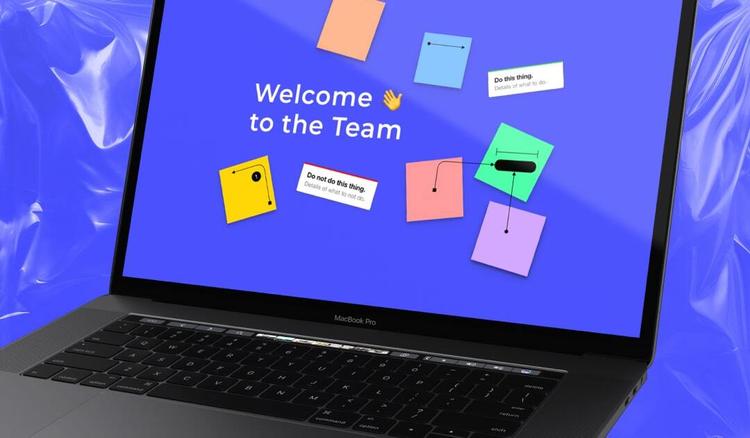Let’s talk about an unwanted outcome of the development process – the failure of software projects.
Despite significant advancements in development tools and methodologies, the failure rate remains alarmingly high. Studies indicate that 31% of projects are canceled before product launch.
In this post, we will delve deep into the top 10 reasons why software projects fail and provide solutions to avoid these common pitfalls. By understanding these challenges and adopting the right strategies, you can significantly increase the success rate of your next software development venture!
10 Reasons why software projects fail
Why do software projects fail? Here’s the list of key factors that prevent your mobile app development process from being a market sensation:
- Unclear project requirements
- Wrong tech stack
- Lack of communication
- Underestimated timeline
- Scope creep
- Gaps in developer skill set & project requirements
- Poor project management
- Unrealistic expectations
- No end-user involvement
- Lack of proper testing
Reason 1: Unclear project requirements
When project requirements lack clarity or constantly change, it becomes almost impossible for the development team to align their efforts with the desired outcomes. Misunderstandings lead to wasted time and resources on developing features that don’t even meet the project objectives. As a result, the final product has no demand from the user’s side or ends up unsatisfactory for them.
Solution: Addressing this issue takes place at the very first steps of the discovery phase. In addition to thorough market analysis, you should engage stakeholders, development teams, and end-users in comprehensive discussions. Such brainstorming and early feedback will help you ensure that everyone understands the project's objectives and specifications.
An effective approach to mitigate the risk of unclear requirements is employing techniques such as user story mapping, wireframing, and mockups. User story mapping allows you to visualize the user journey and different features that the app needs to be useful.
Wireframing and mockups, on the other hand, provide a tangible representation of the app's layout and design, making it easier for stakeholders and developers to visualize the final product.
If you're not sure where to kick things off, feel free to reach out to us. We're here to give you a hand in outlining your app's concept and features, crafting prototypes, and sketching out a comprehensive development roadmap.
SChedule a free consultation!
Contact usReason 2: Wrong tech stack
Influenced by industry trends or random recommendations, managers and developers sometimes choose technologies and frameworks that are not well-suited to the project's specific objectives.
The wrong tech stack makes it impossible to handle the project's complexity or scalability demands. In the long run, your app is at risk of demonstrating poor performance, security vulnerabilities, and an inability to support essential features. These risks are further amplified when teams lack the right security awareness tools to understand how architectural decisions, third-party integrations, and development workflows can introduce avoidable security gaps during implementation.
Anchor: right security awareness tools.
Flutter for app development: 10 reasons to choose
Read articleSolution: Before commencing the development process, conduct an in-depth analysis of the project requirements and match them with suitable technologies. Consider factors like project budget, complexity, scalability, and future growth potential.
If your team still has any doubts, consult with an experienced development partner like SolveIt who can help you make informed decisions and ensure you're on the right track.
Plus, you should learn to keep an eye on the evolving technology landscape throughout development. Keeping up with the current tech agenda will help your team quickly adapt to emerging technologies and effectively address any shifting project requirements. Encouraging your team to use effective project management tools can further streamline processes and boost collaboration.
Reason 3: Lack of communication
Poor communication among stakeholders, team members, and management can lead to misunderstandings, delays, and, ultimately, the failure of software projects. Miscommunication can occur through various channels, such as unclear documentation, lack of status updates, or inadequate feedback loops.
Solution: Establish clear and open lines of communication within the team. Regularly scheduled meetings and status updates are essential to keep everyone on the same page about the project's progress.
Encourage a culture of transparency and openness, where team members feel comfortable voicing their concerns, ideas, and suggestions freely. An anonymous employee survey is a great way to practice this. Additionally, utilize collaboration tools like Trello and ClickUp to streamline workflows and enhance communication.
Reason 4: Underestimated timeline
When the timeline is not realistically planned, you should await rushed development, compromised quality, and eventual project failure. Properly estimating the deadlines means giving the team the right amount of time to craft well-designed and polished software, ensuring a smoother journey toward successful project completion. Incorporating visual aids, such as detailed architecture templates for projects paired with project management software for architects, can help both stakeholders and developers gain a clear understanding of system structures and interconnections, thus reducing ambiguity during the planning phase. Leveraging these templates streamlines communication and strengthens the foundation for successful software delivery.
Solution: Conduct a detailed project estimation and utilize historical data from similar projects to make accurate predictions. Make sure you include buffer time in the project plan to accommodate unexpected delays or changes. Regularly track progress against the timeline and make necessary adjustments to ensure project milestones are met.
As a point of reference, you can rely on the Three-Point Estimation technique to arrive at a more accurate timeline. This method involves estimating the best-case scenario (optimistic estimate), worst-case scenario (pessimistic estimate), and most likely scenario for each task. To calculate the expected time (ET), use the formula: ET = (optimistic + most likely + pessimistic) ÷ 3. This approach takes into account uncertainties and risks, providing a more balanced estimate. And don't neglect to re-evaluate the scope, especially after some major milestones.
Reason 5: Scope creep
Imagine that you're working on a software project, and everything seems to be going smoothly. But suddenly, little requests for extra features keep popping up, like adding a cool animation or including more search options.
These small changes might not seem like a big deal at first, but gradually they transform into a sneaky creature called "scope creep" expanding beyond the initial agreement. It can cause confusion, budget overruns, and extra work for the development team.
Solution: To prevent scope creep, define a well-documented project scope during the discovery phase. Engage stakeholders in thorough discussions to finalize the scope and gain consensus. You should assess the impact of any proposed changes on the project timeline, budget, and resources before approving them.
During the development, communicate clearly with everyone involved, and make sure everyone is well aware of every milestone included in the project. You can also adapt the practice of running frequent demos after each sprint to catch any needed adjustments early on. At SolveIt, we share demos approximately every two weeks, keeping everyone in the loop. Control the scope while staying flexible. Effective project management is the key to success.
Reason 6: Gaps in developer skill set & project requirements
Another significant contributor to software project failures is the mismatch happening when the developers don't have the right expertise needed to handle certain tasks. It's like asking a ballet dancer to fix a car – a complete waste of time!
This can lead to subpar results, delays, and frustration for both the development team and the clients. When developers are not well-equipped for the tasks at hand, it will inevitably lead to buggy code, missed deadlines, and a product that doesn't meet the client's expectations.
Solution: Conduct a thorough assessment of the developers' skills and expertise before allocating tasks. Ensure that team members have the necessary knowledge to handle their assigned responsibilities.
Reason 7: Poor project management
Inefficient project management workflow is a foolproof path to turning the development process into a complete mess. If your project manager sets unclear goals, allocates resources inadequately, or has vague tactics to track progress, your software project failure is a matter of time. Seriously, say hello to missed deadlines, disorganized tasks, and “broken telephone” communication among team members.
Solution: Good project management is like having a compass that keeps everyone heading in the right direction. Invest in a competent project manager who possesses strong leadership and organizational skills.
Hiring a dedicated development team in 2023
Read articleUtilize agile methodologies, such as creating a sprint in Jira to break down tasks into manageable chunks and track progress effectively. Conduct proactive risk assessment and mitigation strategies to streamline workflows. For additional guidance, you can explore trusted resources to streamline project workflows, where you’ll find expert insights, tools, and templates designed to enhance efficiency and collaboration across teams. Plus, regularly review project progress and adapt the management approach to the feedback from your team.
Here at SolveIt, we aim to deliver top-notch project management services. We assign a dedicated PM to every project so that an expert not only oversees the development process but also keeps everyone updated and promptly addresses any issues that might come in the way.
build a dedicated development team with solveit
Contact usReason 8: Unrealistic expectations
While the enthusiastic approach is great, setting unrealistic expectations regarding project timelines, budgets, or features always creates unnecessary pressure on the development team. In custom software development for startups, this often happens when founders expect a complex software application to be completed in just a couple of months and at a low cost — a scenario that can lead to rushed development, compromised quality, and a dissatisfied end-user experience.
You should accept the fact that you cannot buy a Lamborghini with a $10,000 budget. Change the target or find an extra budget. You definitely don’t want to bring your crew to burnout and demotivation after all, do you?
Solution: It's crucial to set achievable and well-defined goals from the start to ensure a smooth sailing journey toward project success. Make sure you clearly communicate the project's constraints and potential challenges to stakeholders to manage expectations effectively. By being transparent, you can build trust among all involved parties.
Reason 9: No end-user involvement
Creating software that delights users is the ultimate goal of any development project. When users are not actively engaged in the development process, it's like missing out on the most valuable source of insights and feedback. Without understanding their needs and desires, the software won’t resonate with its intended audience, resulting in low user adoption, disappointment, and negative feedback.
Solution: Prioritizing end-user involvement from the beginning is vital – it's like inviting them to co-create their dream app with you.
A nice way to test the waters is to build an MVP. This approach allows you to create a scaled-down version of your software, focusing on the core features that are the most critical for users. By releasing the MVP to a limited audience, you can gather valuable user feedback early on, understand user preferences, and identify potential improvements.
Such a user-centric approach will enhance the chances of delivering a successful software solution. Time to market and early user feedback is way more important than trying to cover it all in the MVP version and adding a few extra ways of logging via some social network.
SolveIt could be the MVP development company you're looking for. We can help you create a product within three months. Our team of versatile specialists can provide you with a tailored solution and advise you on the best path to take based on your idea and project requirements.
PoC vs. MVP vs. prototype: what is the difference?
Read articleReason 10: Lack of proper testing
Inadequate testing can be a real wrecking ball for your software projects. When potential bugs and issues go unnoticed, users might encounter crashes, errors, or security vulnerabilities. As a result, this leads to a negative user experience and tarnishes your reputation.
Solution: Implement a comprehensive testing strategy, ensuring that your app is robust and user-friendly. Involve various testing types and use automated testing services to ensure better product quality and reliability. This is especially important for software development companies in USA, where the competition is fierce and user expectations are high.
Moreover, remember to prioritize testing throughout the entire development lifecycle. From the early stages of development to the final release, incorporating testing at each step allows you to detect and fix issues early on, reducing the likelihood of costly defects during production.
Your team is your power
If we had to answer “Why do software projects fail?” in two words, we’d say the “wrong team” because most problems mentioned above depend on the human factor.
An experienced team is undeniably the powerhouse that drives success for your software project. Each team member brings a unique skill set, experiences, and perspectives to the table and ensures that every aspect of the project is handled with precision and care.
However, building a high-performing software development team can be challenging, especially for small businesses or startups with limited resources. This is where outsourcing agencies like SolveIt play a vital role. We help businesses tap into a vast talent pool, identify the right specialists, and onboard them for the project in the shortest terms.
Staff augmentation VS managed services explained
Read articleLeveraging the expertise of an outsourcing team can be a strategic move for businesses looking to build a strong team without the complexities and extra costs of in-house hiring. With great experts in place, any startup can confidently bring innovative solutions to the digital landscape.
Summing up
Software project failures can be prevented with careful planning, effective communication, and a strong focus on delivering value to end users. By elaborating on the ten pitfalls and implementing the suggested solutions mentioned above, you can significantly increase your chances of launching a cool product loved by users.
But even with the best strategy, challenges and unforeseen obstacles may still arise. At SolveIt, we’re always glad to give a helping hand to startups planning to outsource mobile app development. If you’re one of them, don’t hesitate to drop us a line!



